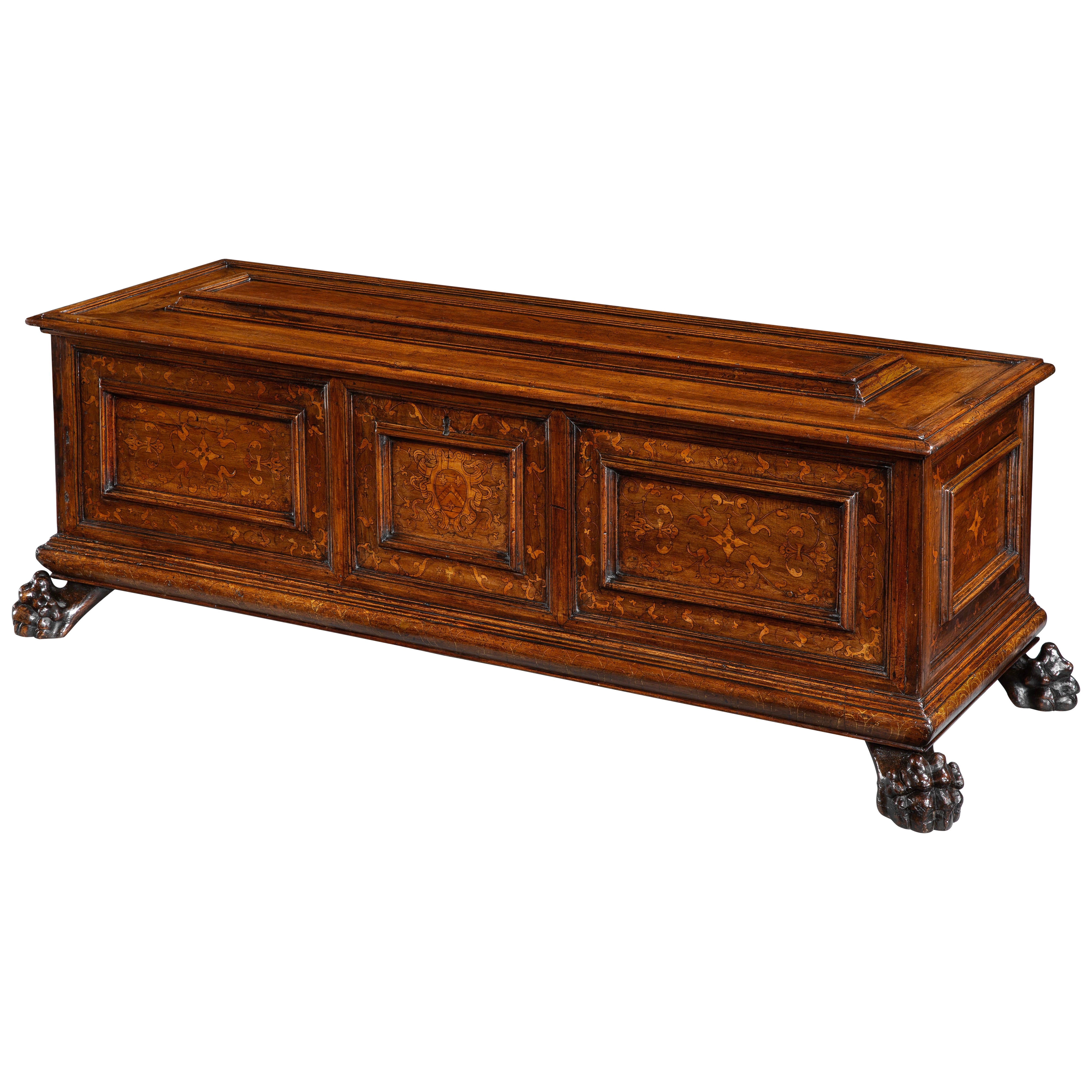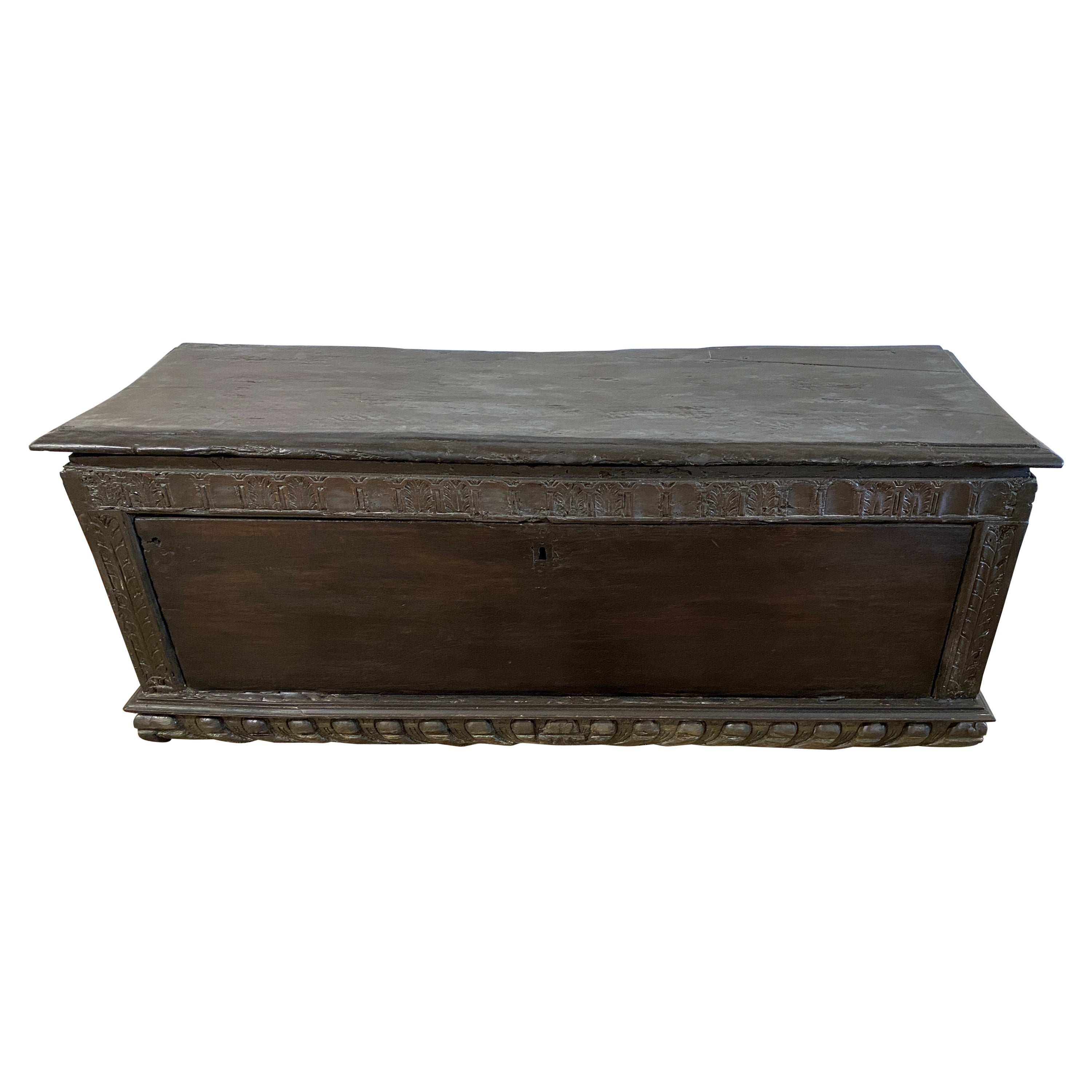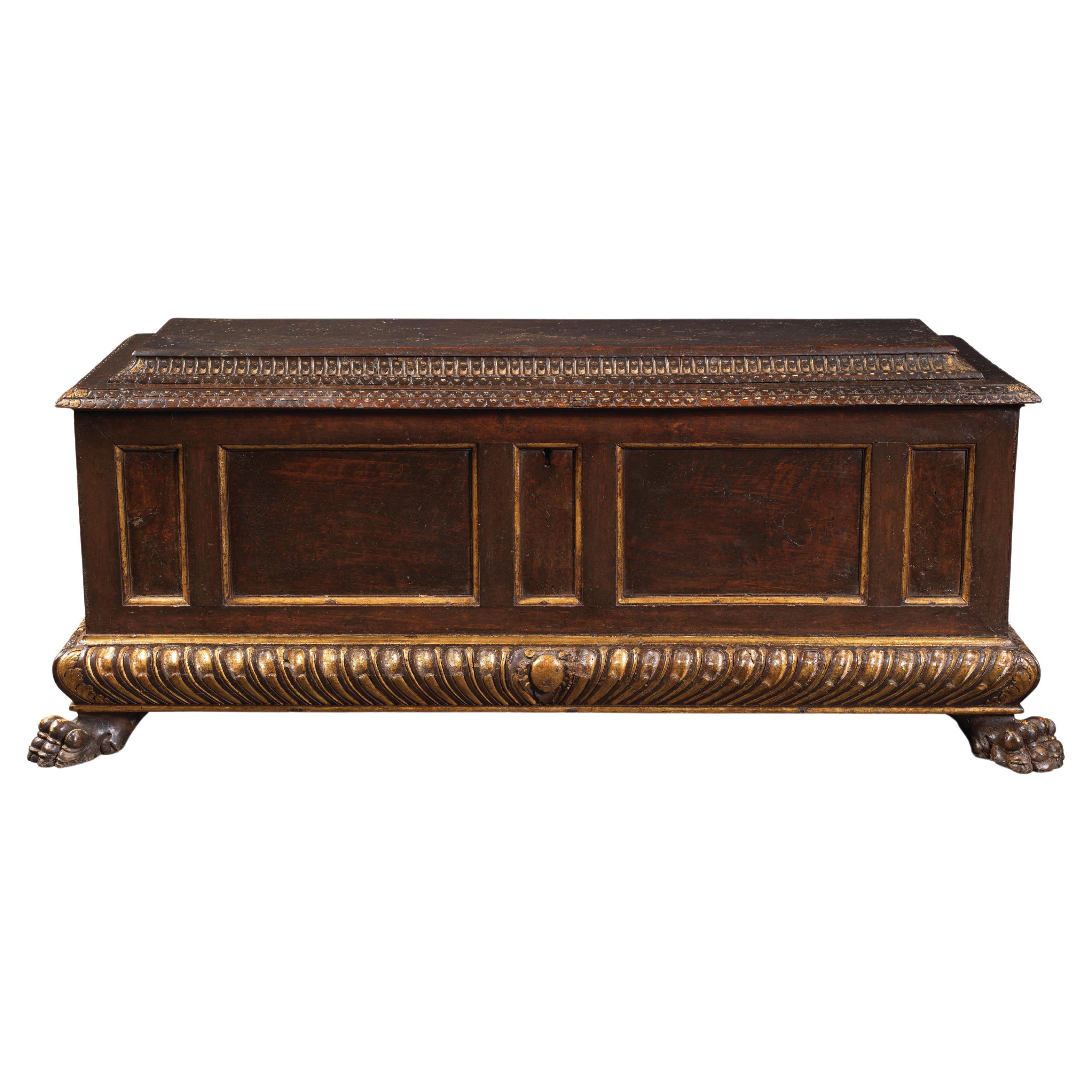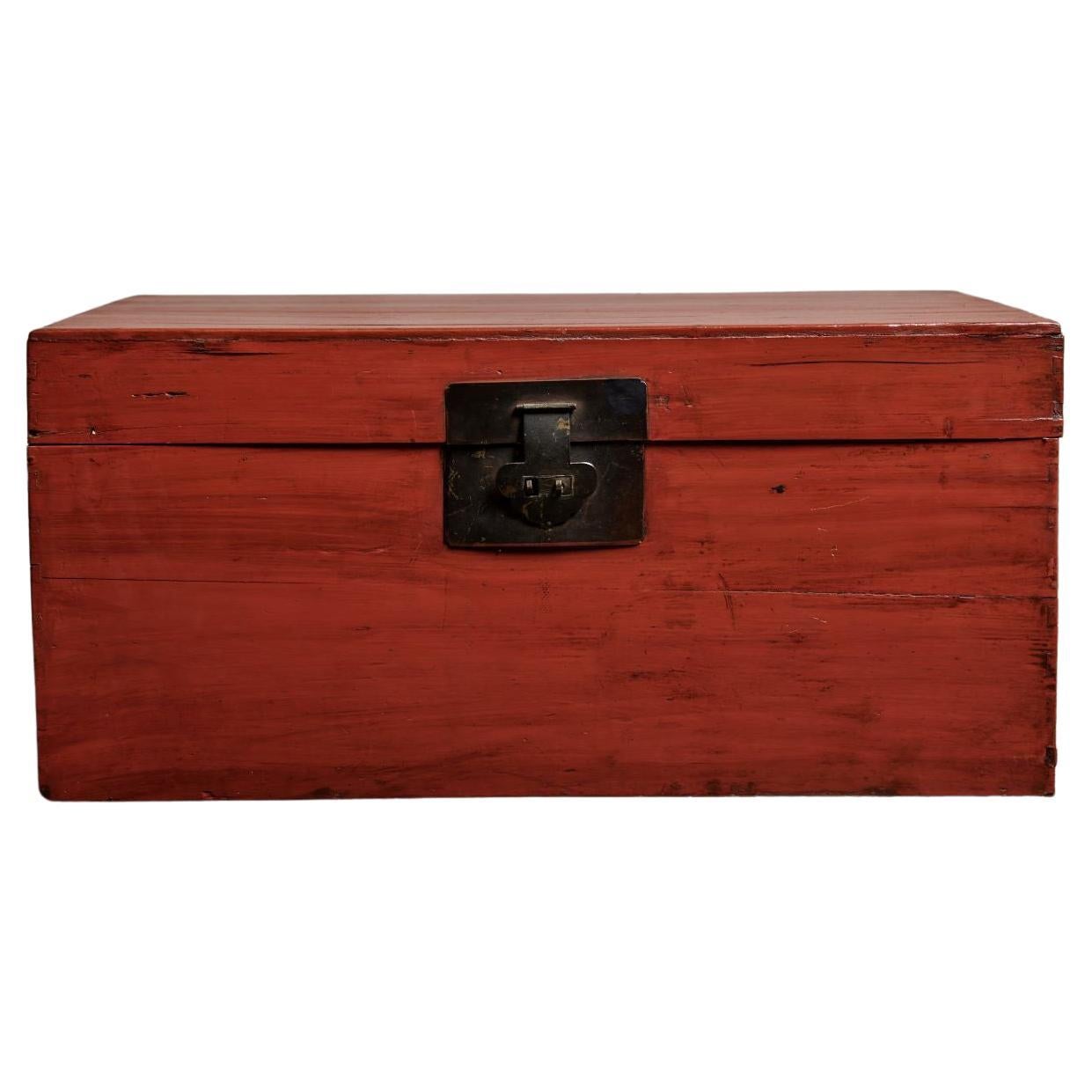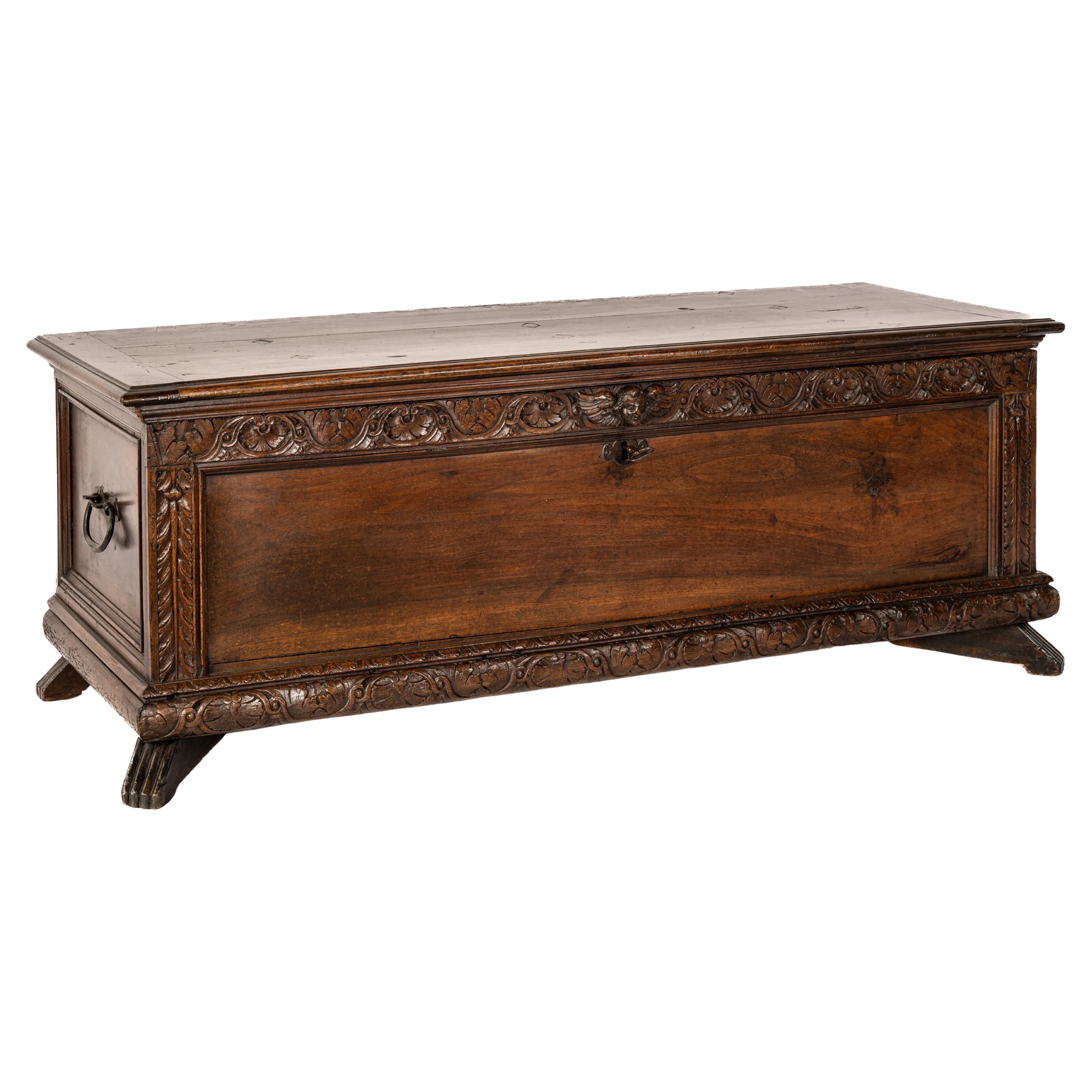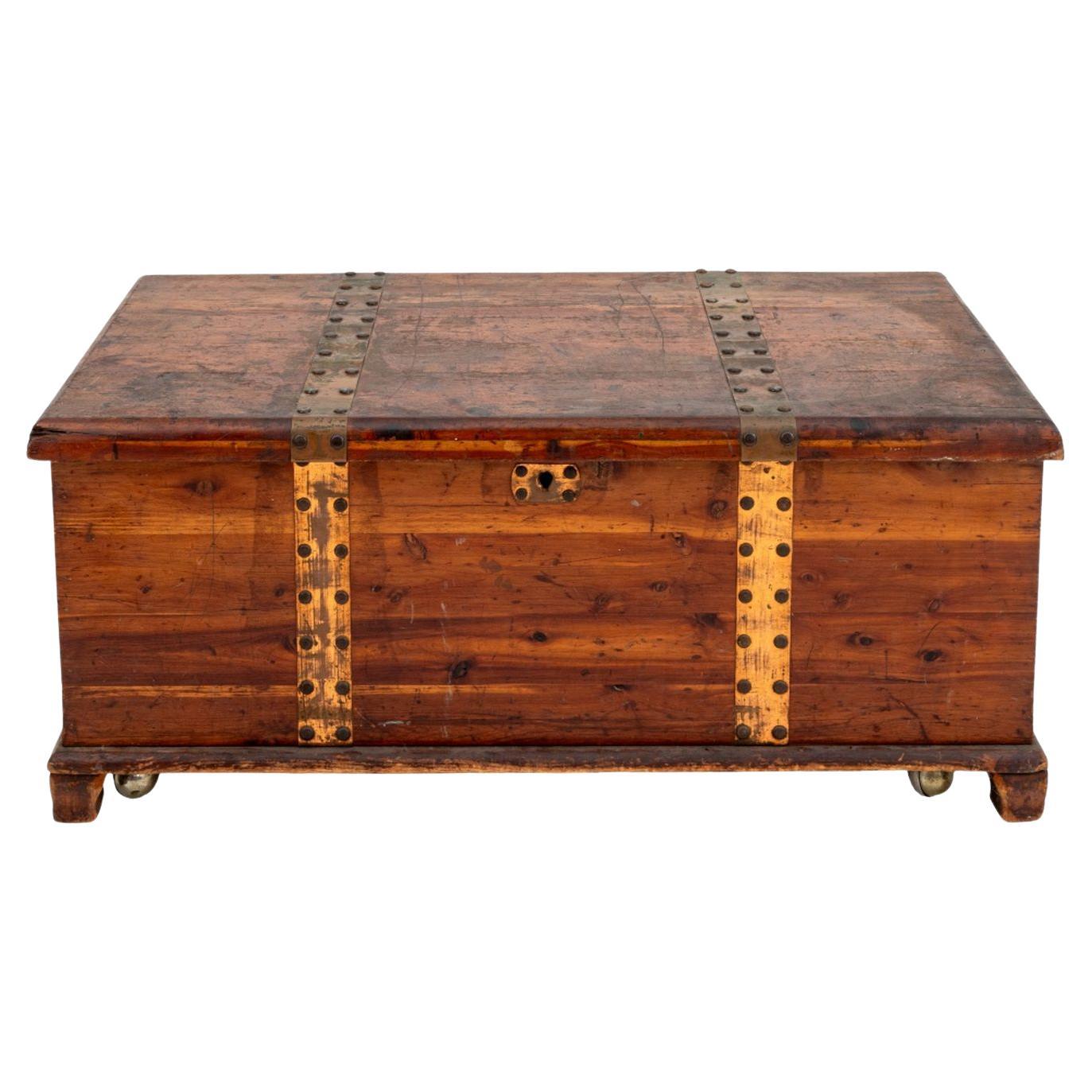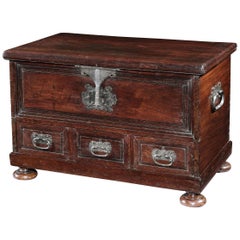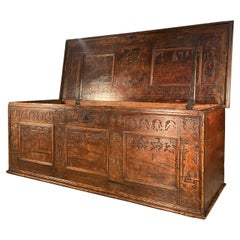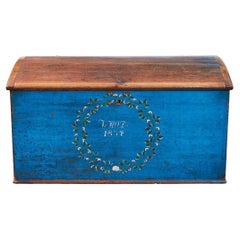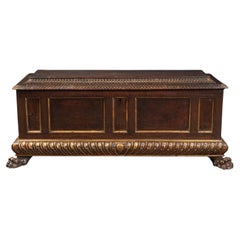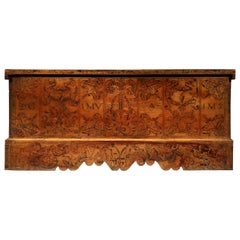
Cassone Chest Cedar Azores 20 October 1592 marriage scrollwork mastic punchwork
View Similar Items
Want more images or videos?
Request additional images or videos from the seller
1 of 17
Cassone Chest Cedar Azores 20 October 1592 marriage scrollwork mastic punchwork
$47,943.15List Price
About the Item
- Dimensions:Height: 31.3 in (79.5 cm)Width: 71.86 in (182.5 cm)Depth: 25.79 in (65.5 cm)
- Style:Renaissance (Of the Period)
- Materials and Techniques:Cedar,Joinery
- Place of Origin:
- Period:
- Date of Manufacture:1592
- Condition:Wear consistent with age and use.
- Seller Location:BUNGAY, GB
- Reference Number:1stDibs: LU3867319064302
About the Seller
5.0
Vetted Professional Seller
Every seller passes strict standards for authenticity and reliability
Established in 1985
1stDibs seller since 2018
97 sales on 1stDibs
Typical response time: 7 hours
Authenticity Guarantee
In the unlikely event there’s an issue with an item’s authenticity, contact us within 1 year for a full refund. DetailsMoney-Back Guarantee
If your item is not as described, is damaged in transit, or does not arrive, contact us within 7 days for a full refund. Details24-Hour Cancellation
You have a 24-hour grace period in which to reconsider your purchase, with no questions asked.Vetted Professional Sellers
Our world-class sellers must adhere to strict standards for service and quality, maintaining the integrity of our listings.Price-Match Guarantee
If you find that a seller listed the same item for a lower price elsewhere, we’ll match it.Trusted Global Delivery
Our best-in-class carrier network provides specialized shipping options worldwide, including custom delivery.More From This Seller
View AllCassone Marriage Chest Italian Marquetry Coat of Arms Gilded Renaissance L73.5"
Located in BUNGAY, SUFFOLK
A late-16th Century, Museum Quality, Italian Walnut & Fruitwood Marquetry Marriage Chest with a Coat of Arms & Retaining Traces of the Original Gilded Decoration
- Exceptionally rar...
Category
Antique 16th Century Italian Renaissance Blanket Chests
Materials
Fruitwood, Walnut
Chest, Cassone, 17th Century, Portuguese, Baroque, Brazil, Hardwood
Located in BUNGAY, SUFFOLK
This striking chest is made from a Brazilian hardwood which I have not been able to identify. The color and figuring of the timber together with the Classic form and ornamentation su...
Category
Antique Late 17th Century Portuguese Baroque Blanket Chests
Materials
Hardwood
Cassone, Chest, Coffer, 17th Century, French, Louis XIV, Walnut
Located in BUNGAY, SUFFOLK
Lovely cassone with classical form, the beautiful figuring of the oak creates subtle, decorative patterning and the simple mouldings give a light, contemporary feel.
The rich, lustr...
Category
Antique Late 17th Century French Louis XIV Blanket Chests
Materials
Walnut
Cassone, 17th Century, Italian, Baroque, Vernacular, Walnut, Carved, Hearts
Located in BUNGAY, SUFFOLK
This handsome cassone has ornament with romantic associations and was most likely a marriage chest. It is a good example of the Italian vernacular, simple in a sophisticated manner. ...
Category
Antique Late 17th Century Italian Baroque Blanket Chests
Materials
Walnut
Strongbox Safe Iron Painted Armada Chest Nuremberg Renaissance
Located in BUNGAY, SUFFOLK
Rare, small, late-Renaissance, Nuremberg, iron, 'armada box', strongbox or travelling safe with its original, naïve, painted decoration
This is a rare, s...
Category
Antique 16th Century German Renaissance Arms, Armor and Weapons
Materials
Iron
Chest or Stollentruhe, Early 16th Century, German Gothic, Oak Chest, Original
Located in BUNGAY, SUFFOLK
This standing chest is of clamp-front construction, extensively decorated with long, ironwork straps with quatrefoil finials which ‘wrap’ around it, and has an ornate, central lockplate, and front legs with full, height stiles. The ironwork straps and finials are fixed with convex, headed nails: running along the front, five long straps; the two side straps; and the five straps on the top. On the chest front, centrally placed, is a large, iron lockplate with four outer, radiating spade finals in each corner and three, superimposed spade finials (a symbol of nobility) which are pierced with the initials ‘BB’. The lockplate receives a corresponding, external hasp fitted to the lid. Below the floor of the chest, the two front stile legs retain most of their original height. The lid is supported by substantial iron strap hinges that extend right down the back of the chest. Inside the chest at the left end is a shallow, oak till.
Construction The chest is of joined, 'clamp-front' construction, reinforced by the nailed, iron mounts. In total it uses ten, oak boards which were riven and planed. The back and front are each formed from a large single plank held to the full height stiles by long, pegged tenons. The sides are also single boards joined into the stiles using long tenons held by dowels, and extend down below the chest bottom, concealing the ends of the bottom boards. The bottom consists of a single board cut into the sides and shallow rebates in the stiles. The front and back boards are dowelled into the bottom boards. The lid which overhangs the sides has a narrow cleat at each end, and consists of one wide plank which has bowed a little as a result of shrinkage.
Ironwork : The wrought ironwork straps, lockplate, hasp and lock all appear all appear to be early, and of the same original manufacture and are fixed with convex headed nails. There is mild dark staining of the oak around the iron mounts, possibly because of low tannin content in the oak.
Length 172 cm., 67 ¾ in., Height 71.5 cm., 28 ¼ in., Depth 63 cm., 24 ¾ in.,
Related to: No 900:2-1904 V&A Museum, London. Stadtmuseum Dusseldorf. Decorative Arts Museum Berlin. Museen Schleswig-Holstein & Hamburg. A related example featuring elaborately-carved feet and formerly in the Horsham Museum, West Sussex, sold at Christie's in 2010 for £97,250 and another example, again with carved feet sold at Sothebys in 2006 for £48,000.
Literature: A similar example is illustrated in H. Lüttgens, Alt- Aachener Wohnkultur; Ein Rundgang durch ein altes Aachener Haus im Wohnstil des 18. Jahrhunderts, Aachen, n.d., ill. 12, and another comparable iron-bound chests...
Category
Antique 16th Century German Gothic Blanket Chests
Materials
Oak
You May Also Like
Late 16th Century Venetian Cedar Wood Cassone Nuptial Chest Garden of Eden Theme
Located in Encinitas, CA
Late 16th century Venetian cedar wood cassone wedding chest featuring finely detailed carving in the champleve decorative style on both the front...
Category
Antique 16th Century Italian Baroque Trunks and Luggage
Materials
Iron
$11,600 Sale Price
60% Off
18th C. Italian Baroque Cassone or Blanket Chest
Located in Sheffield, MA
A wonderfully rustic early Italian hand carved cassone with egg and dart moulded frame, time-softened wood and solid panels on the front and sides. Although this chest has suffered w...
Category
Antique 18th Century Italian Renaissance Blanket Chests
Materials
Wood
Scandinavian Blue Marriage Chest
Located in Greenwich, CT
Wonderful 19th Century Scandinavian blue painted marriage chest, with the owner's initials and dated 1874, the domed top with cleated ends, the ...
Category
Antique 1870s Scandinavian Folk Art Blanket Chests
Materials
Birch, Pine
Large 16th Century Tuscan Wedding Chest Called "Cassone"
Located in Saint-Ouen, FR
Large wedding chest in tinted and gilded walnut, the lid animated with a frieze of pearls, the sides with compartments, the belt decorated with gadroons. It rests on four claw feets.
Category
Antique 16th Century Italian Renaissance Blanket Chests
Materials
Walnut
Small Red Cedar Chest
Located in San Marino, CA
Small Red Cedar chest with metallic handle.
Category
20th Century Blanket Chests
Materials
Wood
Antique 17th century Italian Renaissance Solid Walnut handcarved Cassone Chest
Located in Casteren, NL
This richly carved wooden chest is a fine example of an Italian cassone from the 17th century. The cassone, also known as a bridal chest, was an essential piece of furniture in the h...
Category
Antique Early 17th Century Italian Renaissance Blanket Chests
Materials
Iron
Recently Viewed
View AllMore Ways To Browse
Model Ship Display Case
Antique Merchant Chest
Apprentice Chest
Spanish Cedar
Italian Record Cabinet
Cassone Chest
Spanish Galleon
Large Terra Vessel
Early American Blanket Chest
Antique 3 Tier Stand
English Renaissance Cabinet
Specimen Chest
Robert John Cabinet
Pewter Bar Top
Renaissance Cassone
Flemish Chest
Italian Renaissance Cassone
R S Associates
